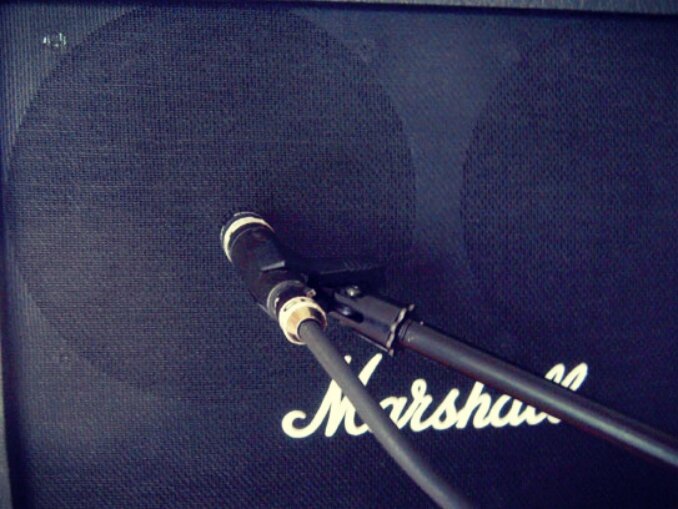What Is A Dynamic Microphone?
There are many different types of microphones out there but a dynamic microphone is definitely the most versatile of the bunch and is most commonly used at gigs, conferences and anywhere using public address systems.
This is because unlike condenser microphones that tend to never leave the studio, dynamic microphones are heavier and ruggedly built which makes them the best stage microphones around. Condenser microphones are a lot more fragile (and usually more expensive) which means they are best kept for calmer environments. Dynamic microphones can survive being knocked, dropped and kicked about on stage for years with only the occasional ball grille replacement necessary.
Another thing that makes them so versatile is their ability to capture really loud noises without distorting the sound. The most common technique for recording electric/bass guitars is to put one of these extremely close to an amplifier. The same goes with recording drum kits and a variety of other amplified instruments. They can still be really good for recording things like vocals and acoustic guitars – it really depends on the sound you’re looking for.
There are of course exceptions to the rule and there can sometimes be some common misunderstandings about the differences between dynamic and condenser microphones. Some condenser microphones are in fact appropriate companions for travelling musicians. An extremely expensive tube microphone wouldn’t be a good idea to take out of the studio but there are some solid-state condenser microphones that can manage being roughly handled as well as dynamic microphones.
Another point to consider is that there is a lot of tradition and people set in their ways (laziness) in the recording industry and dynamic mics are a lot more “plug and play” friendly than condensers. Condenser microphones if set up correctly can also capture a large amount of sound pressure and the only limiting factor will be the amount of juice your mic preamp can handle from it.
The majority of dynamic microphones don’t need a power source like condenser mics do which means you can plug them straight into an amplification source or recording setup. The exception to this are active dynamic microphones that do also need a power supply. You’ve probably seen the term ‘Phantom Power’ floating about which is the extra juice that’s needed to power a condenser microphone. Tube microphones even take this a step further by needing a dedicated power supply and a warm-up time of at least 30 minutes for best results.
Inside Dynamic Microphones
If you look inside a dynamic microphone you will find that it is basically the reverse of a dynamic loudspeaker. This isn’t a coincidence.
Have you ever tried plugging your earphones into a microphone jack and speaking into them? It does actually work albeit poorly. In fact small intercom systems use the loudspeaker as both the speaker and the microphone.
In a dynamic microphone, the sound pressure variations created by a voice or instrument move the cone, which in turn moves the attached coil of wire in a magnetic field, which generates a signal out to your amplifier. Because of this simple design its pretty cheap to manufacture and can be miniaturized easily (you’ve probably seen those tiny headset mics some performers use).
This cheaper production cost means that for $100 you can be using the exact same equipment the pros use regularly. This also means a much more affordable replacement cost for when they do eventually break. Two of the most popular and cost-efficient examples is the Shure SM58 for singers and the SM57 for pretty much everything else.
The biggest downside when it comes to dynamic microphones is their lower frequency response. When it comes to recording certain instruments in a studio like violins you’ll be better off using a condenser microphone to pick up those higher frequencies.
The most important thing though to remember is that you shouldn’t let yourself get overwhelmed by all the pros and cons of different microphone types. With a bit of trial and error you can get a good quality recording with both dynamic and condenser microphones – i’s just about how you use them.




Leave a Reply